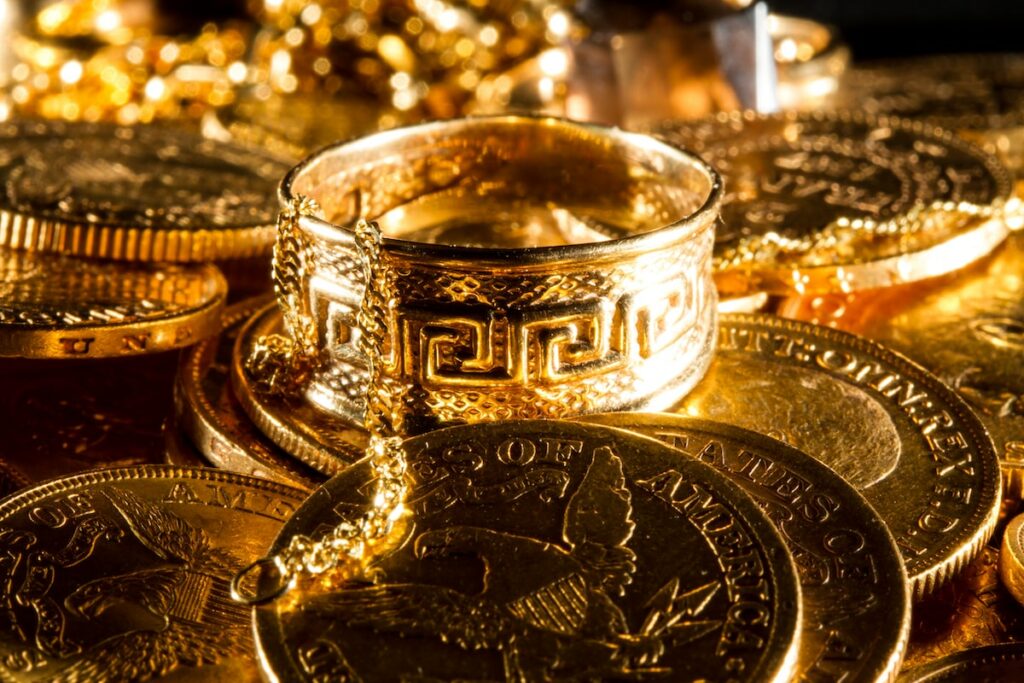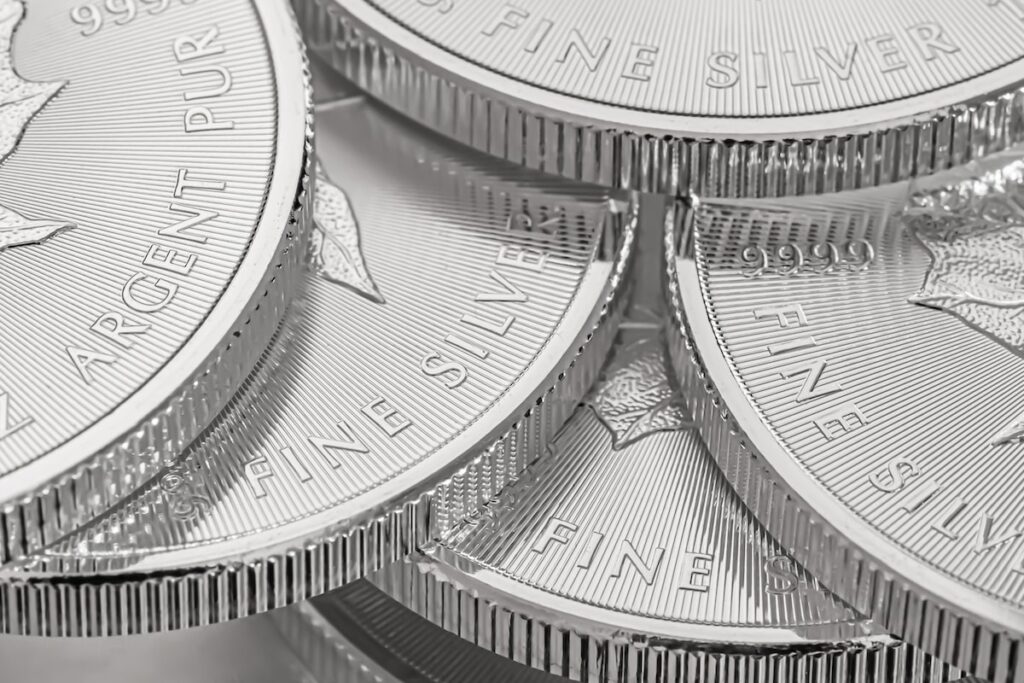In the world of culinary exploration, where new ingredients and unconventional tastes constantly captivate our palates, one intriguing question arises: can silver, an element most commonly associated with jewelry and tableware, also find a place on our plates?
Delving into the realm of gastronomic curiosity, this article embarks on an exploration of the edible potential of silver, unraveling its historical significance, scientific properties, and the ongoing debate surrounding its consumption.
You can eat silver. Silver is not toxic to humans, but it also has no nutritional benefits. So although it can be consumed, there is no benefit in doing so
Join us as we venture into the world of silver, where the line between aesthetics and appetites becomes beautifully blurred.
A Historical Glimpse: Silver’s Culinary Legacy
Silver’s connection to the culinary world can be traced back centuries of human history.
Silver has been significant in various culinary traditions and practices since ancient times.
In many cultures, silver vessels and utensils were used for serving and consuming food, believed not only to enhance the dining experience but also to possess antimicrobial properties that helped preserve the freshness of ingredients.
The shimmering allure of silver also made it a popular choice for decorative purposes, with silver leaf and dust being used to embellish desserts, confections, and even beverages.
Silver’s presence in gastronomy extended beyond mere aesthetics. It was recognized for its potential health benefits as well.
Historically, silver was used in traditional medicine as a treatment for ailments and as a means to purify water and preserve food.
Its purported antimicrobial properties made it a sought-after ingredient for preventing spoilage and extending the shelf life of perishable items.
While the specific methods of silver consumption varied across cultures, its use as a culinary element demonstrates the enduring fascination with this precious metal in food and drink.
Edible Silver Forms: From Flakes to Dust
When it comes to exploring the edible potential of silver, various forms, and preparations are available, each with its unique characteristics and applications.
Silver can be incorporated into culinary creations, from delicate flakes to finely ground dust.
Silver flakes, often made by hammering or pressing silver into thin sheets, are popular for adding a touch of elegance and visual appeal to dishes.
These shimmering flakes are commonly used to adorn desserts, chocolates, and even savory dishes, instantly elevating their presentation and creating a luxurious aesthetic.
Silver dust, on the other hand, involves finely grinding silver into a powder-like consistency.
This form of silver is often used as a decorative element, creating a delicate shimmer when dusted onto the surface of beverages, confectionery, and other culinary creations.
The fine texture of silver dust allows for more precise application, making it ideal for intricate designs or subtle accents.
Both silver flakes and dust offer culinary artists the opportunity to experiment with texture and visual appeal, transforming ordinary dishes into extraordinary works of art.
These edible silver forms testify to the creativity and ingenuity of chefs and food enthusiasts who seek to push the boundaries of culinary aesthetics.
However, it is important to note that caution must be exercised while these silver forms are edible.
The debate surrounding the safety of silver consumption remains, and excessive ingestion can lead to health risks.
Thus, responsible usage and adherence to regulatory guidelines are crucial when incorporating silver into food and beverages.
From flakes that gracefully dance on desserts to dust that imparts a subtle sheen, the availability of edible silver forms opens up a world of artistic possibilities in the culinary realm.
As we continue to explore the edible potential of silver, we delve into the realm of creativity, where even the most ordinary dishes can be transformed into stunning masterpieces with a touch of silver’s shimmering allure.
Culinary Uses and Aesthetics: Silver in Food Presentation
Silver’s presence in culinary practices extends beyond its edible forms; it also holds a significant role in food presentation, adding a touch of sophistication and visual allure to dishes.
Culinary artists and chefs often utilize silver to elevate the aesthetic appeal of their creations, turning ordinary meals into extraordinary culinary experiences.
One of the prominent uses of silver in food presentation is using silverware and tableware.
Silver cutlery, such as forks, knives, and spoons, has long been associated with elegance, wealth and luxury.
The reflective surface of silver enhances the dining experience, creating a sense of refinement and grace.
Silver serving platters, trays, and bowls also contribute to the overall aesthetic, providing a stunning backdrop for showcasing culinary masterpieces.
Beyond traditional silverware, incorporating edible silver forms, such as flakes and dust, adds a captivating visual element to various dishes and beverages.
Desserts, pastries, and confections are often adorned with delicate silver flakes, transforming them into visually striking creations that are as appealing to the eyes as they are to the palate.
When carefully dusted onto the surface of cocktails, beverages, or even savory dishes, silver dust imparts a subtle yet enchanting shimmer, enhancing their presentation and making them stand out.
Silver’s association with luxury and opulence has made it popular for special occasions, fine dining establishments, and culinary events.
Its presence in the culinary world speaks to the deep-rooted connection between aesthetics and gastronomy, where presentation plays a crucial role in the overall dining experience.
However, it is important to balance aesthetics and practicality when incorporating silver in food presentation.
Responsible usage, adherence to safety guidelines, and awareness of potential health risks associated with consuming silver are essential considerations.
Additionally, regulations and guidelines surrounding the use of silver in food may vary across regions, further emphasizing the importance of staying informed and following established protocols.
Silver’s inclusion in food presentation in culinary artistry represents a harmonious blend of aesthetics and gastronomy.
From silverware to edible forms, this precious metal continues to captivate our senses, creating visually stunning dishes that leave a lasting impression on our palates and memories.
Silver as a Dietary Supplement: Benefits and Drawbacks
Silver as a dietary supplement has garnered attention for its potential benefits and drawbacks.
Some proponents believe that consuming silver in small amounts can offer health advantages, while others raise concerns about its safety and lack of proven efficacy.
One claimed benefit of silver as a dietary supplement is its antimicrobial properties.
It is believed to have the ability to inhibit the growth of bacteria and other microorganisms, potentially offering support for the immune system and promoting overall well-being.
However, the scientific evidence supporting these claims is limited and often inconclusive.
Proponents also suggest that silver may have anti-inflammatory properties and could aid in wound healing.
Colloidal silver, a suspension of silver particles in a liquid, is often promoted for these purposes.
Nevertheless, the medical community emphasizes that more research is needed to fully understand its effectiveness and potential risks.
Concerns regarding the safety of silver as a dietary supplement stems from the risk of silver accumulation in the body.
Prolonged or excessive silver consumption may lead to argyria, characterized by bluish-gray skin discoloration.
While argyria is considered rare, it serves as a stark reminder of the potential adverse effects of silver ingestion.
Regulatory agencies have placed restrictions on the use of silver as a dietary supplement in some countries.
These regulations aim to protect consumers from potential harm and ensure that products containing silver meet specific safety standards. It is important to note that these regulations may vary across jurisdictions.
Given the ongoing debate and limited scientific evidence, it is advisable for individuals considering silver as a dietary supplement to consult with healthcare professionals.
They can provide personalized guidance based on individual health needs and concerns.
In the realm of silver as a dietary supplement, it is essential to balance potential benefits and the need for further scientific research.
Responsible and informed decision-making and understanding regulatory guidelines can help individuals navigate the complex landscape surrounding silver as a dietary supplement.
Alternative Edible Metals: Exploring Silver’s Cousins
While silver holds a prominent place in the culinary world, it is not the only edible metal that captivates the imaginations of chefs and food enthusiasts.
Several alternative edible metals offer unique flavors, textures, and visual appeal, providing an opportunity to explore the boundaries of culinary creativity.
Gold, often associated with luxury and opulence, is a popular edible metal choice.
Edible gold leaf, composed of thin sheets of pure gold, embellishes desserts, chocolates, and beverages, creating a dazzling and extravagant presentation.
Gold adds a touch of elegance and sophistication to culinary creations, making them truly remarkable.
Copper is another edible metal that finds its way into the culinary spotlight.
Copper cookware, such as pots and pans, is prized for its excellent heat conductivity and precise temperature control.
While the direct consumption of copper is limited, copper vessels in cooking can subtly impart certain flavors and enhance the visual appeal of dishes.
Moving away from precious metals, bronze offers a distinct culinary experience.
Bronze, an alloy of copper and tin, possesses a warm, earthy hue that can elevate the aesthetic appeal of dishes.
It is often used in decorative elements, such as sculptures and utensils, to add a rustic charm to culinary presentations.
Although not traditionally considered a decorative metal, iron has entered the culinary scene recently.
Cast iron cookware is valued for its excellent heat retention and ability to enhance the flavors of dishes.
It imparts a unique depth and richness to food, making it a favorite among chefs and home cooks.
Exploring these alternative edible metals expands the realm of culinary possibilities, allowing for the creation of visually stunning dishes with unique flavor profiles.
However, it is crucial to consider safety, regulatory guidelines, and individual dietary restrictions when incorporating these metals into food.
As the culinary world continues to push boundaries, chefs and food enthusiasts embrace the allure of alternative edible metals, presenting extraordinary creations that delight the senses and challenge conventional notions of gastronomy.
The exploration of silver’s cousins offers a glimpse into a fascinating world where metals meet cuisine, forging a path for innovative culinary experiences.




